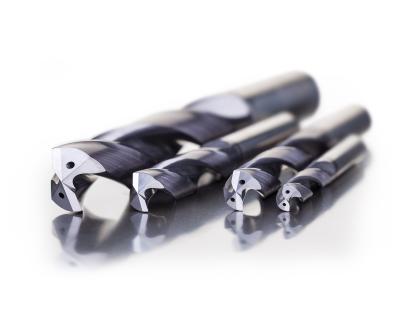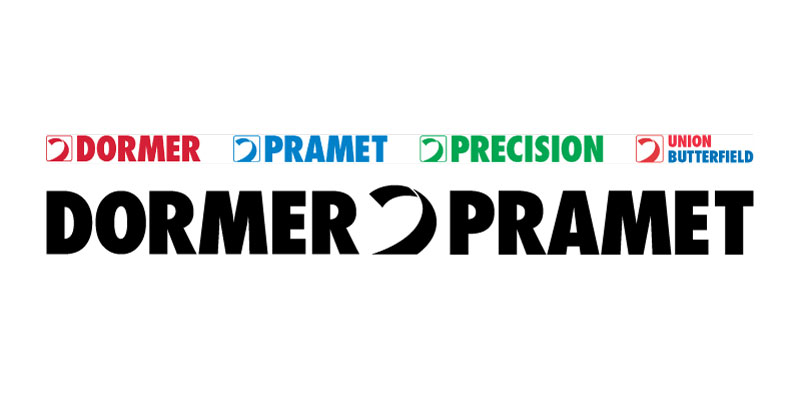
The Dormer Force M assortment of drills provide a high level of productivity specifically for drilling stainless steel (or ISO-M) materials while operating consistently across a diverse variety of machines and conditions. This makes them suitable for high production, general engineering and subcontract environments.
Their Force M “material specific” drilling family introduction follows the recent launch of the Force X drilling family, which was designed for use in a wide range of materials.
All of the solid-carbide “Force” drills in the program feature a modified four-facet split point geometry, to enhance self-centering capabilities and improve hole quality. Also, this split point design improves chip formation, tool strength and wear resistance specifically in these tough ISO-M materials.
A unique feature of all “Force” family drills is their continuously thinned web (CTW) technology flute construction. This offers a strong web design, while at the same time reducing thrust forces during drilling. Combined with the drills’ consistent edge preparation, which provides predictable wear, CTW supports a highly consistent and reliable drilling process.
Each drill in the Force range is manufactured from premium micrograin carbide along with a multiple-layered titanium aluminum nitride (TiAlN) tool coating to provide an excellent combination of hardness and toughness, resulting in high wear resistance, long tool life and high productivity.
A strong corner design increases stability and reduces the forces encountered during drilling and especially during breakthrough at the exit surface, in both general drilling and cross-hole applications.
Supporting drilling depths of 3xD solid construction (R458) or coolant through (R467), and 5xD solid construction (R454) or coolant through (R463) the Force M drills feature internal coolant delivery in all sizes from 3mm to 16mm and 1/8" to 5/8".
Contact Details
Related Glossary Terms
- coolant
coolant
Fluid that reduces temperature buildup at the tool/workpiece interface during machining. Normally takes the form of a liquid such as soluble or chemical mixtures (semisynthetic, synthetic) but can be pressurized air or other gas. Because of water’s ability to absorb great quantities of heat, it is widely used as a coolant and vehicle for various cutting compounds, with the water-to-compound ratio varying with the machining task. See cutting fluid; semisynthetic cutting fluid; soluble-oil cutting fluid; synthetic cutting fluid.
- edge preparation
edge preparation
Conditioning of the cutting edge, such as a honing or chamfering, to make it stronger and less susceptible to chipping. A chamfer is a bevel on the tool’s cutting edge; the angle is measured from the cutting face downward and generally varies from 25° to 45°. Honing is the process of rounding or blunting the cutting edge with abrasives, either manually or mechanically.
- hardness
hardness
Hardness is a measure of the resistance of a material to surface indentation or abrasion. There is no absolute scale for hardness. In order to express hardness quantitatively, each type of test has its own scale, which defines hardness. Indentation hardness obtained through static methods is measured by Brinell, Rockwell, Vickers and Knoop tests. Hardness without indentation is measured by a dynamic method, known as the Scleroscope test.
- titanium aluminum nitride ( TiAlN)
titanium aluminum nitride ( TiAlN)
Often used as a tool coating. AlTiN indicates the aluminum content is greater than the titanium. See coated tools.
- wear resistance
wear resistance
Ability of the tool to withstand stresses that cause it to wear during cutting; an attribute linked to alloy composition, base material, thermal conditions, type of tooling and operation and other variables.
- web
web
On a rotating tool, the portion of the tool body that joins the lands. Web is thicker at the shank end, relative to the point end, providing maximum torsional strength.

